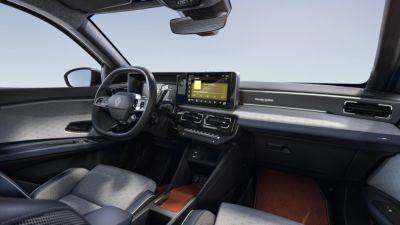The Quest to Map the Inside of the Proton
The original version of this story appeared in Quanta Magazine.
Physicists have begun to explore the proton as if it were a subatomic planet. Cutaway maps display newfound details of the particle’s interior. The proton’s core features pressures more intense than in any other known form of matter. Halfway to the surface, clashing vortices of force push against each other. And the “planet” as a whole is smaller than previous experiments had suggested.
The experimental investigations mark the next stage in the quest to understand the particle that anchors every atom and makes up the bulk of our world.
“We really see it as opening up a completely new direction that will change our way of looking at the fundamental structure of matter,” said Latifa Elouadrhiri, a physicist at the Thomas Jefferson National Accelerator Facility in Newport News, Virginia, who is involved in the effort.
The experiments literally shine a new light on the proton. Over decades, researchers have meticulously mapped out the electromagnetic influence of the positively charged particle. But in the new research, the Jefferson Lab physicists are instead mapping the proton’s gravitational influence—namely, the distribution of energies, pressures, and shear stresses throughout, which bend the space-time fabric in and around the particle. The researchers do so by exploiting a peculiar way in which pairs of photons, particles of light, can imitate a graviton, the hypothesized particle that conveys the force of gravity. By pinging the proton with photons, they indirectly infer how gravity would interact with it, realizing a decades-old dream of interrogating the proton in this alternative way.
“It’s a tour de force,” said Cédric Lorcé, a physicist at the École Polytechnique in France who was not involved in the work. “Experimentally, it’s extremely complicated.”
From Photons to Gravitons
Physicists have learned a tremendous amount about the proton over the past 70 years by repeatedly hitting it with electrons. They know that its electric charge extends roughly 0.8 femtometers, or quadrillionths of a meter, from its center. They know that incoming electrons tend to glance off one of three







